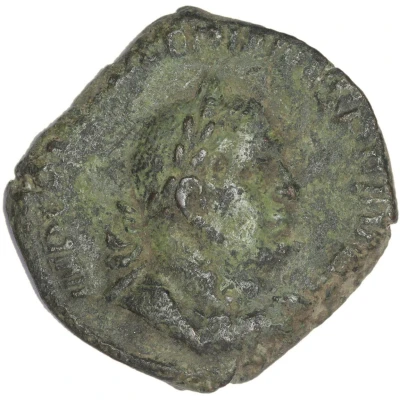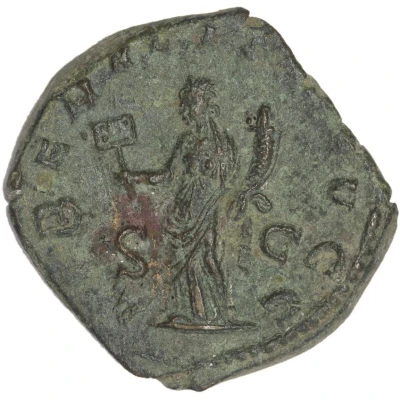Sestertius - Valerianus LIBERALITAS AVGG II S C; Liberalitas
| Bronze | - | - |
| Issuer | Rome › Roman Empire (27 BC - 395 AD) |
|---|---|
| Emperor | Valerian (Publius Licinius Valerianus) (253-260) Gallienus (Publius Licinius Egnatius Gallienus) (253-268) |
| Type | Standard circulation coin |
| Years | 255-256 |
| Value | Sestertius (⅛) |
| Currency | Antoninianus, Reform of Caracalla (AD 215 – 301) |
| Composition | Bronze |
| Shape | Round (irregular) |
| Technique | Hammered |
| Demonetized | Yes |
| Updated | 2024-10-05 |
| Numista | N#286059 |
|---|---|
| Rarity index | 100% |
Reverse
Liberalitas, draped, standing left, holding tessera in right hand and cornucopiae in left hand.
Script: Latin
Lettering: LIBERALITAS AVGG II S C
Translation:
Liberatlitas Duorum Augustorum Secunda. Senatus Consultum.
Second liberality of the two emperors (Augusti). Decree of the senate.
Comment
Source:Online Coins of the Roman Empire (OCRE)
Interesting fact
The Liberalitas coin was minted during the reign of Emperor Valerianus, who ruled the Roman Empire from 253 to 260 AD. The coin's design features a personification of the Roman goddess Liberalitas, who is depicted standing and holding a scale and a cornucopia, symbolizing the idea of abundance and prosperity. The coin's inscription, "LIBERALITAS AVGG II S C," translates to "Liberalitas of the Augusti," indicating that the coin was issued by the Roman emperors. This coin is significant not only for its historical value but also for its artistic and cultural significance. The personification of Liberalitas on the coin reflects the importance of the concept of liberalitas in Roman culture, which emphasized the idea of generosity, freedom, and prosperity for all citizens. Additionally, the coin's design showcases the skill and craftsmanship of Roman coin makers during this period, making it a valuable artifact for collectors and historians.

